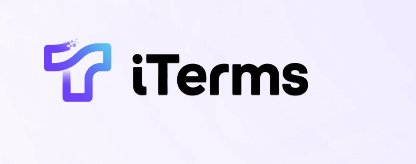12 路由与中间件之使用内置中间件
在ASP.NET Core框架中,中间件是构建应用程序的核心组成部分,它们负责处理请求和响应的各个环节。上一节我们探讨了如何配置中间件,今天我们将深入了解如何使用ASP.NET Core提供的各种内置中间件。这些中间件使得开发者能够快速实现常见的功能,如身份验证、会话管理、静态文件处理等。
1. 静态文件中间件
ASP.NET Core中有一个非常实用的内置中间件,可以直接为应用服务器提供静态文件,如HTML、CSS、JS和图片等。使用静态文件中间件,可以方便地将这些文件提供给客户端。
示例代码
首先,在Startup.cs文件中配置静态文件中间件:
public class Startup
{
public void Configure(IApplicationBuilder app, IWebHostEnvironment env)
{
// 开启静态文件中间件
app.UseStaticFiles();
// 其他中间件配置
app.UseRouting();
app.UseEndpoints(endpoints =>
{
endpoints.MapGet("/", async context =>
{
await context.Response.WriteAsync("Hello World!");
});
});
}
}
在这里,app.UseStaticFiles()使得应用能够直接服务于wwwroot文件夹中的静态文件。如果你的项目结构类似于以下内容:
/MyAspNetCoreApp
|-- /wwwroot
| |-- css
| | |-- style.css
| |-- js
| | |-- app.js
| |-- index.html
|-- Startup.cs
你可以通过浏览器访问http://localhost:5000/index.html来查看静态文件。
2. 日志记录中间件
ASP.NET Core 提供了强大的日志记录功能,借助内置的中间件,可以轻松地对请求进行日志记录。可以在请求进入管道时记录请求信息,也可以在响应返回时记录响应信息。
示例代码
在Startup.cs中,我们可以简单地添加日志记录:
public void Configure(IApplicationBuilder app, IWebHostEnvironment env, ILogger<Startup> logger)
{
app.Use(async (context, next) =>
{
logger.LogInformation("Handling request: " + context.Request.Path);
await next.Invoke();
logger.LogInformation("Finished handling request.");
});
app.UseRouting();
app.UseEndpoints(endpoints =>
{
endpoints.MapGet("/", async context =>
{
await context.Response.WriteAsync("Hello World with Logging!");
});
});
}
在这个例子中,使用了一个简单的中间件来记录每个请求的路径。当请求进入和响应返回时,都会记录相关信息。
3. 身份验证中间件
ASP.NET Core 提供了多种身份验证模式,如Cookie、JWT等。身份验证中间件可以帮助保护你的应用,确保用户经过身份验证才能访问某些资源。
示例代码
以下是如何配置简单的Cookie身份验证中间件的示例:
public void ConfigureServices(IServiceCollection services)
{
services.AddAuthentication("MyCookieAuth")
.AddCookie("MyCookieAuth", options =>
{
options.LoginPath = "/Account/Login";
});
}
public void Configure(IApplicationBuilder app, IWebHostEnvironment env)
{
app.UseAuthentication(); // 添加身份验证中间件
app.UseRouting();
app.UseEndpoints(endpoints =>
{
endpoints.MapGet("/", async context =>
{
await context.Response.WriteAsync("Hello World with Authentication!");
});
});
}
在这个例子中,我们首先在ConfigureServices中配置了Cookie身份验证。在Configure方法中,通过app.UseAuthentication()添加身份验证中间件。
4. 使用中间件处理错误
使用中间件处理应用程序中的错误也是一种常见的需求。ASP.NET Core提供了UseExceptionHandler中间件可以帮助我们处理未处理的异常。
示例代码
以下是如何设置错误处理的例子:
public void Configure(IApplicationBuilder app, IWebHostEnvironment env)
{
app.UseExceptionHandler("/Home/Error"); // 错误处理
app.UseRouting();
app.UseEndpoints(endpoints =>
{
endpoints.MapGet("/", async context =>
{
throw new Exception("Test Exception");
});
endpoints.MapGet("/Home/Error", async context =>
{
await context.Response.WriteAsync("An error occurred!");
});
});
}
在此示例中,如果在根路径抛出异常,用户将被重定向到/Home/Error页面,显示错误信息。
总结
通过了解和使用ASP.NET Core内置中间件,开发者可以轻松地实现许多常见的功能,不需要从零开始进行实现。在本节中,我们介绍了静态文件中间件、日志记录中间件、身份验证中间件和错误处理中间件的使用,帮助你构建更加健壮的应用程序。接下来,我们将进入控制器与视图的章节,深入探讨控制器的创建与使用。
